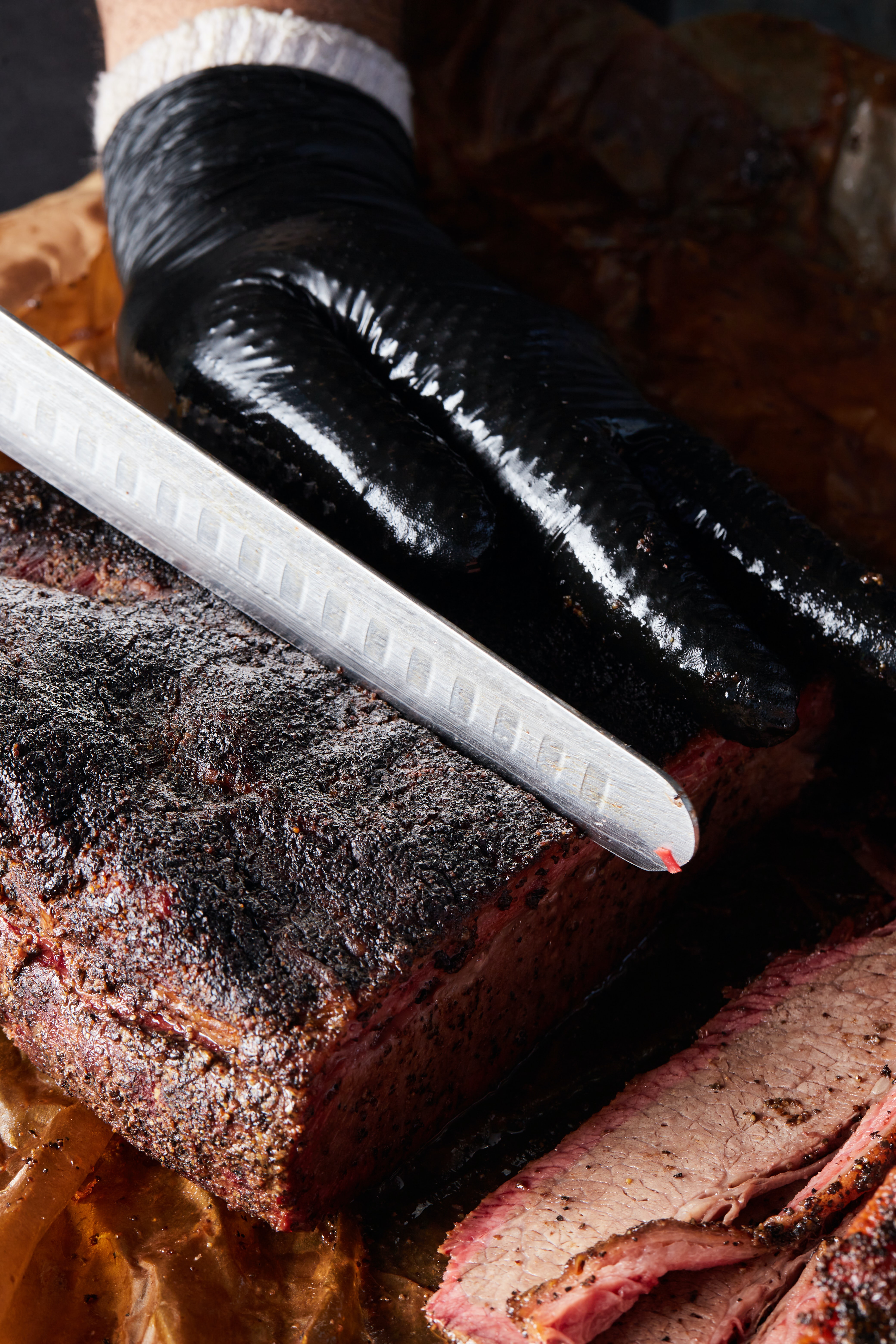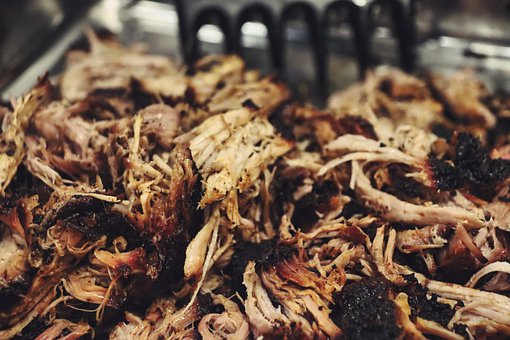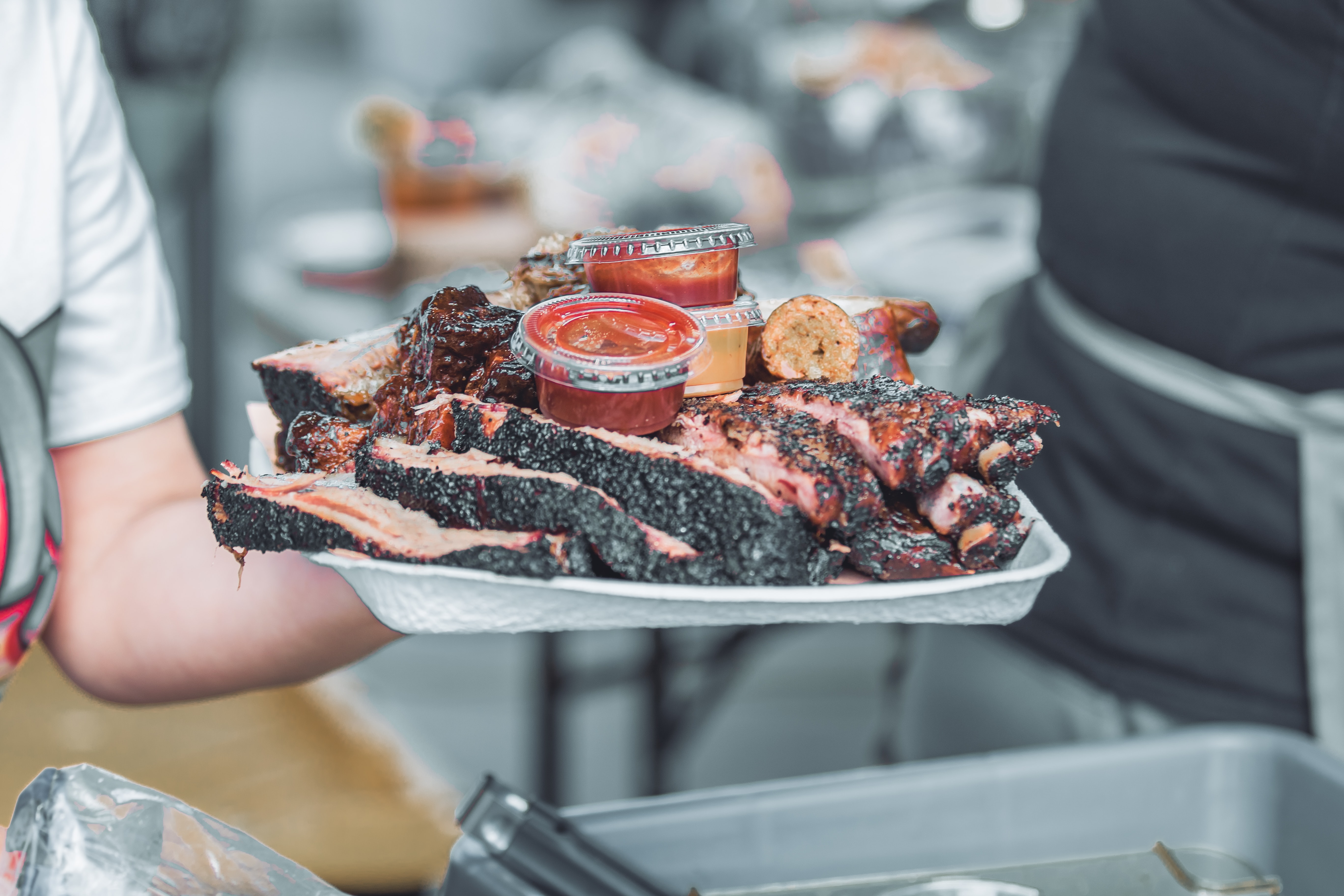Pulled pork and brisket are very popular bbq dishes. Some people prefer one over the other, while there are many others who can’t easily make their pick.

Choosing between beef brisket vs pulled pork for a bbq can be really challenging. You would want something that will not go dry and would taste fantastic after pulling it off out of the grill.
With so many opinions on which is best between brisket and pulled pork bbq, making a choice becomes even more difficult. We have rounded up these two different types of bbq so that in the end, you can easily say which bbq is better.
Brisket vs Pulled Pork

Brisket
With the right cooking method, even the toughest cut of meat can turn into a delicious barbecue. Brisket is a perfect example.
Brisket is taken from the breast section of a cow, just beneath the first five beef ribs and behind the foreshank. It is also the same part that is used in making pastrami, corned beef or pot roast.
Brisket can be a large cut of meat weighing between 3 and 8 pounds. Since this part is quite long, it is typically cut in half and sold as two pieces of meat in the supermarket.
Looking at the meat, you’ll notice a significant amount of connective tissue, and this is what’s making the brisket tough.
Cooking Brisket
As brisket is a tough cut, the best method of preparing it involves slow cooking at lower temperatures for several hours.
One good example would be smoking, such as the famous Texas-style beef brisket which produces delicious and tender meat after you smoke it for 8 to 12 hours in a wood fire. Other methods include braising or brining.
Flavor
Generally, brisket has a strong beefy taste to it, but the cooking process greatly impacts the taste. Smoking and brining infuse specific flavors to the raw meat while braising imparts the taste of the liquid. Of course, a delicious barbecue sauce can greatly enhance the taste.
Meat Cut
As brisket is divided into two different cuts, each half is given different names. The first cut, also known as the thin cut or flat cut, is the leaner piece of the two cuts. The second, also known as the point cut or deckle, has a bit of extra fat so it is more flavorful.
The first cut is lean meat, and it slices up neatly and it is the preferred choice for corned beef. But for bbq, the second cut is chosen as it renders the meat tender and juicy after long hours of cooking. The second cut of beef brisket is also ideal for stewing and braising.
Recipes
Brisket is the primary cut not just for bbq but also for braised recipes and Jewish pot roasts. In different countries, you’ll also find many popular dishes that use this cut of meat. For instance, in Romania, brisket is commonly used in preparing the pastrami. The Italian bollito misto from a brisket is also worth trying.
In England, brisket is popularly used for braising and pot roasts. Some Chinese noodle recipes also use brisket. And of course, the Vietnamese noodle soup called pho is also made with brisket.

What Is Pulled Pork?
People travel far and wide for the best pulled pork in the country, but they say nothing beats the pulled pork in the Southern US.
Pulled pork is a classic dish that is prepared from the pork’s shoulder part. The cooking method typically involves smoking the meat slowly over wood. Once cooked, the meat is shredded by hand and served with different sauces such as bbq sauce.
When you are just starting to learn bbq and smoking, pulled pork is a great place to start because this cut of meat is inexpensive and very forgiving.
Cooking Pulled Pork
Regardless of whether you plan to bbq the whole pork shoulder or just part of it, it’s important to remember to get that part with a good quantity of fat as this makes the preparation of the pulled pork extremely easy.
However, you need to trim the large thick sections of fat in the pork shoulder to allow the meat to better absorb the smoke. Trim it to about half to a quarter of an inch.
Applying rub liberally on the pork meat before cooking enhances the taste of pulled pork as it infuses the flavor of the rub to the meat. Make sure to cover every part of the meat.
To achieve a flavorful pulled pork, season the meat and wrap it in plastic wrap before placing it inside the fridge, and let it stay overnight. On the cooking day, remove the pork meat early so it will come to room temperature before you place it in the smoker for bbq.
Flavor
When cooked properly on the grill, pulled pork is smoky, savory and a bit sweet and fatty in flavor.
Most folks who prefer pulled pork over brisket do like the melt-in-your-mouth texture of this dish. Right out of the smoker and after pulling, you could serve it as is with your favorite barbecue sauce, or you could also use it in a wide variety of dishes including burgers.
Meat Cut
Pork shoulder is ideal for pulling pork. This part has optimum fat content, giving you that tender, melt-in-your-mouth dish. If a whole pork shoulder isn’t available for your pulled pork recipe, a good alternative would be getting a picnic roast or Boston butt. Each of these cuts can weigh up to 8 pounds, but between the two, Boston butt has less bone and more lean meat.
Recipes
An authentic pulled pork is a barbecue dish that is cooked for many hours over a charcoal pit until the meat falls apart. You know that it is cooked correctly when you can easily shred or pull the meat apart by hand.
Slow cooking over low fire is key to ensure that the internal fat melts properly without making the meat go dry.
Additionally, if grilling pig shoulder, it’s important to keep it on indirect heat and away from the source of fire or smoke.
Aside from using a smoker or grill, many people are now making pulled pork using a slow cooker or gas grill.
The cooking times vary depending on your cooking method, but generally, it takes between 4 and 9 hours to get your meat perfectly cooked for pulling.
To pull the pork, you will need two forks. After pulling, add the barbecue sauces and any meat juices. It is best served hot.
You can eat pulled pork as is, or you can also incorporate it in a wide variety of dishes, the most popular being burgers and sandwiches.

Here’s A Wrap-up Of The Differences Between Brisket And Pulled Pork:
Cost. Although we did not discuss this above, we all know the big price difference between beef and pork.
Beef is considerably more expensive than pork, so if you don’t want to spend more, you could use a pork butt, pork ribs or pork bellies for a barbecue instead of brisket.
Cut of meat. Another obvious difference between brisket and pulled pork is the cut of meat used. Pulled pork is made from pork butt or shoulder while the brisket is from the upper chest region of beef.
Pulled pork is more forgiving. If you undercook it within the safe limits, it can be tough but it would still taste great. If you overcook it, you could still serve it and it would still taste ok as long as you have that delicious barbecue sauce.
On the other hand, brisket is less forgiving. If you undercook a brisket, it tends to be very chewy and hard to eat. If you overcook it, it becomes dry.
Pork cooks faster. Beef brisket requires a longer cooking time than pork butt or other parts of pork that you can use for barbecue.
Taste. Brisket has an earthy and strong profile that goes well with classic side dishes such as potato salad, pickles or onion slices and bold barbecue sauce.
In contrast, pulled pork has a rich and sweet flavor that pairs well with coleslaw, mac n cheese and baked beans.
Summary
Brisket is definitely the perfect choice if you prefer eating beef to pork. However, if you haven’t decided yet which barbecue to choose, knowing the differences between brisket and pulled pork can greatly help you in choosing the right meat dish.

